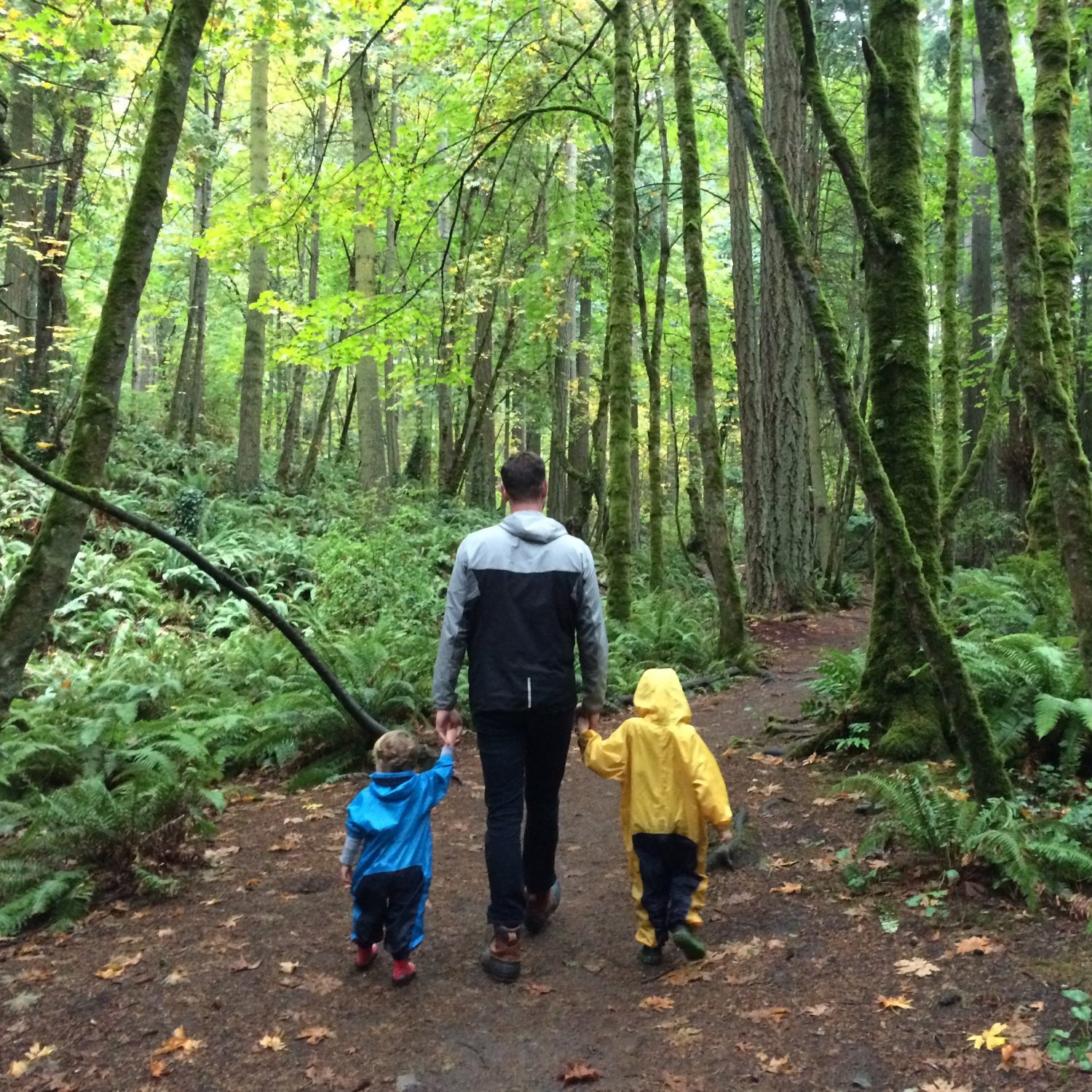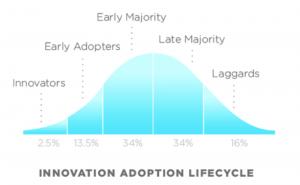My learning in ETEC 533 has certainly taken me on a journey. As a 10 year math and science teacher, I had started to get the impression that I was figuring this whole thing out. This course has been a good reminder that, like in all things, we always have much more to learn. Reflecting on the course and rereading my e-folio entries, two main themes emerged for me. First, the power of misconceptions and the role of context/culture in their creation and correction. Second, the ways that a teacher’s knowledge of content, technology, and pedagogy can serve to create cultural change in classroom and school as a whole.
Beginning with A Private Universe (1987), my own preconceptions about misconceptions were challenged. Coming into the course, I was held a naive assumption that student misconceptions were easily eliminated by sound instruction – that, once confronted with fact, a student would accommodate their existing schema to incorporate the new information (Piaget, 1936). Despite my many experiences to the contrary as a middle school teacher, I held my own misconception about misconceptions in the same sticky, deeply rooted way my students do. Even in my first post, I can see myself holding on to my naive assumption, trying to assimilate the evidence in A Private Universe and thinking of technology as some ‘magic bullet’, rather than make an accommodation in my original schema:
“…I can see good student facing tech being very effective at helping her (and her classmates) understanding concepts like seasonal variance and phases of the moon. The teacher employed the tech they had access to at the time (the mechanical solar system model), but I imagine that an interactive digital model could be significantly more powerful. For example, the sun would actually be emitting light, so the models would be illuminated allowing for students to see the phases of the moon clearly. They would also be able to test their own (mis)conceptions, like the irregular orbits Heather drew, the clouds causing the phases of the moon, etc. – the act of which might help jostle those long-held views from their entrenched positions” (Elsdon, 2017).
While I still agree with this on some levels, it echoes the assumption that misconceptions are easy to dislodge through sound instruction. It does not address the important questions of how and why the misconception became entrenched. The schema was need-fulfilling for the student at some key moment – indeed, there is a context to the student and their misconceptions that play an important role in both creation and correction of misconceptions. Without understanding that, the task of addressing incorrect schemas now seems like groping in the dark.
I see my current beliefs on the role of technology in addressing misconceptions start to take shape after the Roblyer (2012) and Muffoletto (1994) readings, mainly because of the way they situate technology within the larger idea of culture. In my blog, I identify a, “common thread they [Roblyer and Muffoletto] share about technology being less a collection of ‘things’ and more about the integrated practices and behaviours of our culture” (Elsdon, 2017). Taking this wider view, my ideas about hands-on or digital models fully addressing Heather’s ideas about the seasons in A Private Universe only go part way. Her ideas about proximity (perihelion/aphelion) are a part of the puzzle, and need to be met head-on. In a later blog entry on the T-GEM framework, I see my thinking on this take shape by incorporating the process of generating/evaluating/modelling. In my T-GEM design, I incorporate the examination of specific common misconceptions of diffusion into the evaluation section of the process – a sign that I am starting to see that quality instruction (the presentation of fact alone, without addressing previously held misconception) is not enough.
Finally, Winn (2003) connected the end of the loop for me with embodied learning and the idea that individual and environment are a single, co-evolving organism. My post on TELE’s (“If I Were a Carpenter…”) seemed to predict my eventual connection with Winn’s (2003) work. Seeing the commonality of TELE’s, specifically, “…that learning is constructed through experience – by moving through cycles of dissonance, integration, and resonance” (Elsdon, 2017), I see that it is the moments of dissonance that bring the most growth. The constantly evolving individual/environment can stagnate in certain schemas, providing space for misconceptions to take root. Pedagogy that leads students into uncomfortable places in a safe, empowered way allows them to examine their beliefs and gives them permission to create new schemas, or assimilate the old ones. Further, my observation that, “…content is not as meaningful without a context. Each one of these TELE’s, to varying degrees, aims to make learning relevant and meaningful, contextualizing it and attempting to create (or have students create) problems they are motivated to solve” (Elsdon 2017), echoes my synthesis of Roblyer and Muffoletto’s ideas about technology as needing to be situated within a multifaceted culture.
In addition to the thinking I have done on misconceptions, I have also been stretched in my understanding of how the confluence of content, technological, and pedagogical knowledge shape the decision making of teachers, and their role in creating a successful learning environment. The work of Mishra & Koehler (2016) on Technological Pedagogical Content Knowledge (TPACK) was research that I had already read and cited several times in my other MET classes – the first time I read their work, it resonated with me as an effective model for the interlocking pieces necessary to integrate technology int learning in an authentic way. In my first blog post, I reference TPACK, suggesting that, “[t]eachers, themselves, must be experts not only in their content areas and pedagogy, but also in the technology and how it relates to the learning of their students” (Elsdon, 2017). I was very focused at the time on the ideal – the center of the T/P/C/K venn diagram, where all the knowledges converge in ideally approached instruction. Whenever I look back on work and see ‘shoulds’ and ‘musts’ peppered in my writing, I tend to feel a little sheepish. It is hard to remember, when we read something powerful by a brilliant thinker, that all things are in process and continually growing and evolving – that incorporating new ideas is not an ‘all or nothing’ affair. To use such imperative language only serves to marginalize the process and create barriers to those who are resistant to opening themselves to new ideas. Since then, I have moved away from looking just at the ideal and have become more interested in the interstices between 2 or 3 of the knowledges. Schulman (1986) explored how pedagogical and content knowledge interact, but how does technological knowledge interact with content knowledge in the absence of pedagogical considerations? How does pedagogical knowledge inform technological knowledge, and vice-versa? I posted several videos throughout the course that I had created to share with my personal learning network (PLN) because they connected with some of our coursework. When I look at them now, I can clearly see the development of either T/C knowledge (finding ways to bend technology to show mathematical notation – see the post entitled “Creating Powerful Google Forms for Math”) or T/P knowledge (finding ways to use technology to support formative student self-assessment practices – see the post entitled “If I Were a Carpenter…”). Nicol’s (2007) work on repurposing a old toll – the multiple choice question (MCQ) – was fascinating to me through the lense of T/P knowledge. It was a great example of how deep pedagogical. Nicol (2007) not only understood how and why the old use of MCQ’s was flawed, but also how it could be used as a tool for a different job, transforming it into something pedagogically sound and aligned with a Constructivist and formative approach to learning.
The importance of the themes I have found is clear to me. The examination of misconceptions and the role of TPACK in creating powerful learning environments are both foundational elements of this course and integral parts of my developing teaching practice. This course has done much to change the trajectory of my professional development. I am now much more aware of the power and perniciousness of student misconceptions. Anchored Instruction, SKI/WISE, T-GEM, LfU equipped me with not only a wealth of tools that we have explored, but also frameworks from which to examine emergent tools, or even create new tools of my own. Like all good learning, I am left with many more questions and a desire to go deeper in many areas. From an academic/research perspective, I am fascinated with future of embodied learning given the emergence of virtual reality and augmented reality. In the classroom, I am excited to use my expanding understanding of TPACK as a lens through which I design my future courses. I am also keen to pursue the T-GEM method of identifying and addressing specific student misconceptions – of gathering information on how and why students assimilate incorrect information into their personal schemas.
I am thankful for all I have gained through this experience, and I look forward to putting it into practice in both my future academic pursuits and professional practice.
References
Alibali, M. W., & Nathan, M. J. (2012;2011;). Embodiment in mathematics teaching and learning: Evidence from learners’ and teachers’ gestures. Journal of the Learning Sciences, 21(2), 247-40. doi:10.1080/10508406.2011.611446
Cognition and Technology Group at Vanderbilt (1992a). The Jasper experiment: An exploration of issues in learning and instructional design. Educational Technology, Research and Development, 40(1), 65-80.
Coimbra, M. T., Cardoso, T., & Mateus, A. (2015). Augmented reality: An enhancer for higher education students in math’s learning? Procedia Computer Science, 67, 332-339. doi:10.1016/j.procs.2015.09.277
Edelson, D.C. (2001). Learning-for-use: A framework for the design of technology-supported inquiry activities. Journal of Research in Science Teaching,38(3), 355-385.
Elsdon, J. (2017) Have TPACK, Will Travel. Retrieved from: https://blogs.ubc.ca/elsdon/
Harvard-Smithsonian Center for Astrophysics (Producer). (1987). A Private Universe [online video]. Retrieved from: http://learner.org/vod/vod_window.html?pid=9
Khan, S. (2007). Model-based inquiries in chemistry. Science Education, 91(6), 877-905.
Hattie, H. & Timperly, H. (2007). The power of feedback. Review of Educational Research, 77(1), 81-112.
Linn, M., Clark, D., & Slotta, J. (2003). Wise design for knowledge integration. Science Education, 87(4), 517-538
Mazur, E (2012) Why You Can Pass Tests and Still Fail in the Real World (9:32) https://www.youtube.com/watch?v=TyikmLxntrk
Mishra, P., & Koehler, M. (2006). Technological pedagogical content knowledge: A framework for teacher knowledge. The Teachers College Record, 108(6), 1017-1054.
Muffoletto, R. (1994). Technology and restructuring education: Constructing a context. Educational Technology, 34(2), 24-28.
Nicol, D. (2007) E‐assessment by design: using multiple‐choice tests to good effect, Journal of Further and Higher Education, (31),1, pp. 53-64, http://ezproxy.library.ubc.ca/login?url=http://www.tandfonline.com/doi/abs/10.1080/03098770601167922
Roblyer, M.D. & Doering, A. (2012). Integrating educational technology into teaching, (5th Ed.). Upper Saddle River, New Jersey: Prentice Hall.
Shulman, L.S. (1986). Those who understand: Knowledge growth in teaching. Educational Researcher, 15(2), 4 -14.
Winn, W. (2003). Learning in artificial environments: Embodiment, embeddedness, and dynamic adaptation. Technology, Instruction, Cognition and Learning, 1(1), 87-114. Full-text document retrieved on January 17, 2013, from: http://www.hitl.washington.edu/people/tfurness/courses/inde543/READINGS-03/WINN/winnpaper2.pdf


